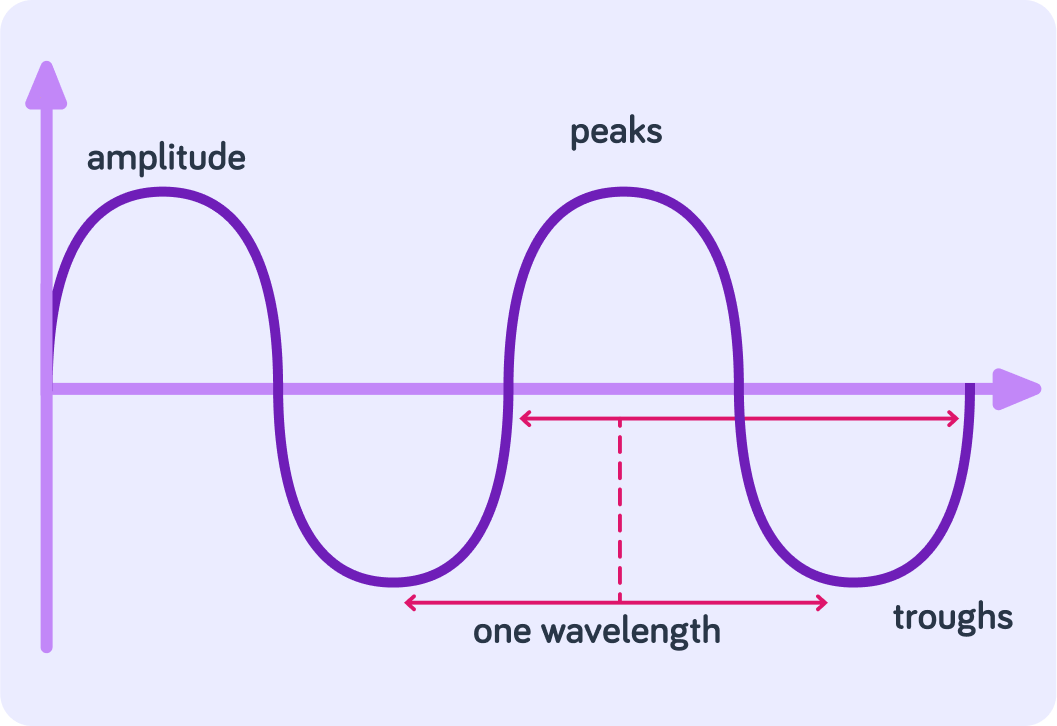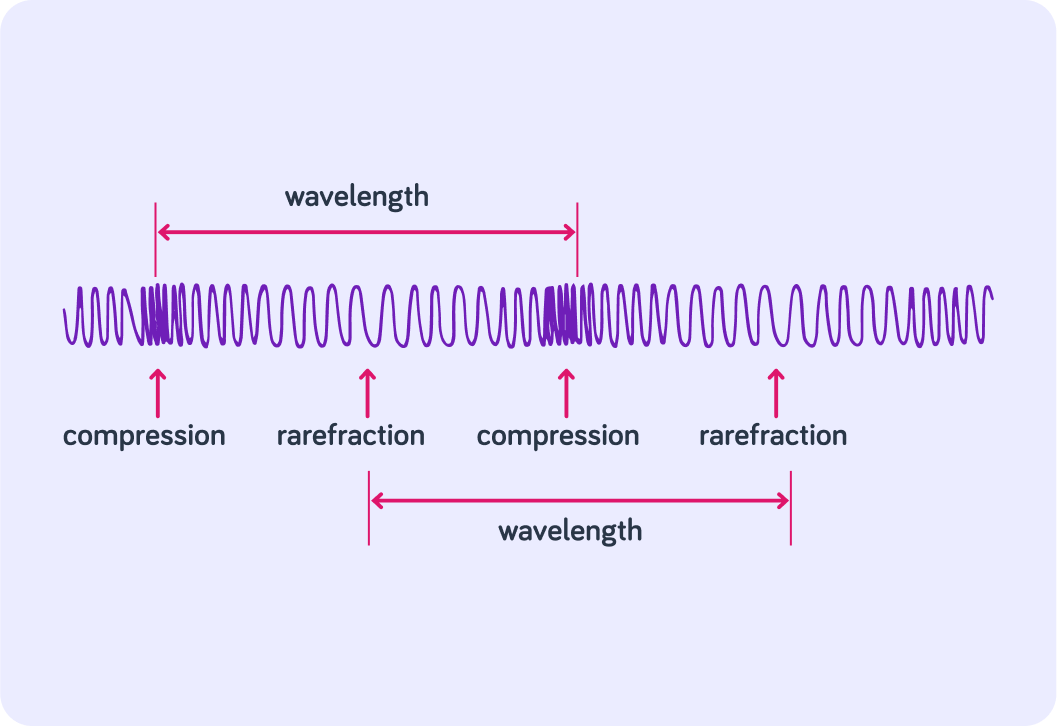YOU ARE LEARNING:
Amplitude and Wavelength

Amplitude and Wavelength
The length of one full oscillation of a wave is its wavelength, and the maximum displacement of the oscillating particles from their rest position is the amplitude.
Let's look at some important features of waves; their amplitude and wavelength.
Can you guess what the wavelength (λ) of a wave means?

Can you guess what the amplitude of a wave means?

What is the distance between two neighbouring peaks called? Have a look at the diagram above if you need a reminder.


What do you think we call the distance between two neighbouring troughs? Here you can also have a look at the diagram to help you.


Notice that one whole wavelength contains a complete oscillation, including one peak and one trough.
So, we can measure the wavelength by measuring between neighbouring peaks, between neighbouring troughs, and from the start to finish of the oscillation.

To measure the amplitude of a wave, you measure the distance...

To measure the wavelength (λ) of a wave, you measure the distance...

Longitudinal waves do not have peaks and troughs. They have compressions and rarefactions. Can you guess how you measure the wavelength (λ) of a longitudinal wave?

Here we can see a longitudinal wave in a slinky.
The wavelength is the distance between two neighbouring compressions or rarefactions.

Does this wave have an amplitude? Answer either yes or no.


What kinds of waves have amplitudes?

What do you think is the definition of amplitude?

What is the symbol for wavelength?

Both amplitude and wavelength are measures of distance. What is the SI unit for this?

